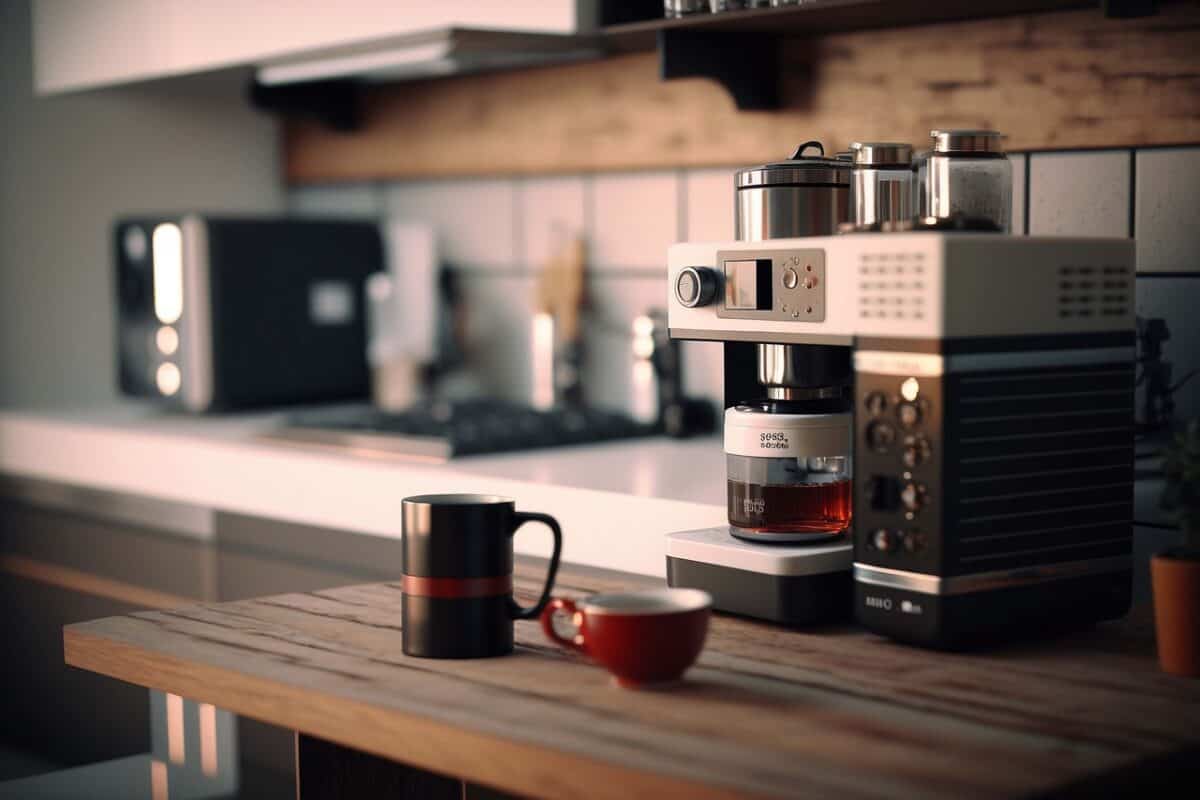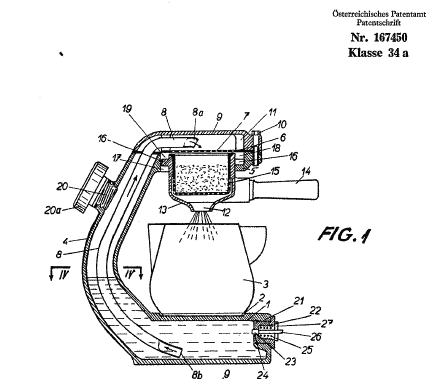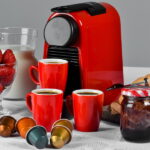From the reservoir to the gurgling noise and the quick heating up of everything, making coffee is a fantastic process. Yet, many people don’t think much about what happens inside their coffee machine each time they switch it on. Let’s explore the world of these machines and discover how coffee makers work!
Contents
How a Coffee Maker Works [With Diagram]
Brewing coffee with a drip coffee machine is a straightforward process that yields a great cup of coffee. It involves adding water to the machine, grinding coffee beans, and allowing the hot water to drip over the grinds to extract the flavor.
Overview of Coffee Makers
Coffee makers can be categorized into two main types:
- Manual
- Automatic
Manual coffee makers require the user to grind the beans and fill the pot with hot water. They are typically cheaper than automatic java coffee makers and require more effort and time to operate.
Automatic coffee makers are the most popular type of coffee machine. They are the most convenient type of coffee maker as they normally require the least effort. They typically have various features, such as a timer, adjustable water temperature and strength settings, and a programmable coffee brew time.
Parts of a Coffee Maker
A typical coffee machine consists of four main components:
- A water reservoir
- Heating element
- Filter
- A brewing chamber
Water Reservoir
The water reservoir is the main source of water for the brewer. Here is where you add cold water for the desired strength of coffee. The reservoir is usually made of plastic or metal and is connected to the heating element.
Heating Element
The heating element heats the water inside the reservoir. The most commonly used heating elements are electric elements, which can range in power from 500 to 1500 watts. Some models may also use gas or steam to heat the water.
Filter
The filter is where the coffee grounds are placed. The filter is usually made of paper, metal, or cloth, which helps strain the coffee grounds and extract the flavor. Some models may also use a permanent filter.
The Brewing Process
Brewing coffee with perfect flavor and aroma requires precision, attention to detail, and patience. You must carefully consider each process step to ensure the optimum taste.
- The initial step of the brewing process requires filling the water reservoir with the necessary amount of water. The amount of water can vary depending on the machine’s size and the coffee you want to make.
- Once the water reservoir is filled, insert a filler into the filter basket. This will change depending on the type of machine that you have.
- The desired amount of ground coffee is then measured and added to the filter in the filter basket. The amount of ground coffee used will depend on how much coffee you want.
- After all these steps, turn the coffee maker on. This will start the brewing cycle.
Pre-infusion
The first step in the brewing cycle is pre-infusion. Pre-infusion is when the hot water from the heating element is allowed to mix with the coffee grounds. This mixing helps to saturate the grounds even and ensures a more consistent flavor extraction.

Heating Process
The heating element warms the water in the reservoir to a temperature ranging from 195 to 205 degrees Fahrenheit. This temperature is essential to ensure the perfect extraction of flavor from the coffee grounds.
Extraction
The final step in the brewing cycle is extraction. The hot water is forced through the filter and over the coffee ground during extraction, extracting the flavor and aromas. The process usually takes around 5 minutes, depending on the strength of the coffee desired.
Serving
Remove the carafe or filter basket and pour the coffee into cups. It’s so satisfying to watch the brewed coffee fill the carafe and smell the aroma filling the room. I love it!
Coffee Maker Technical Issues
Having your drip coffee maker in top condition is essential for brewing your coffee. However, what if your drip coffee device is acting up? Here are some technical problems you could encounter when your device breaks.
Clogged Coffee Filter
Coffee filters can become clogged over time with coffee grounds. This clogging can make it difficult for water to pass through. The result is a weak, under-extracted cup of coffee.
To avoid this, clean and replace the filter basket often and use fresh coffee grounds.
Leaky Water Reservoir
If your water tank is leaking, there’s a good chance it’s time to invest in a new machine. The leaked coffee and water can spread to other parts of the machine and cause more harm.
Inconsistent Brewing Temperature
If the heating element is not performing as it should, it can produce too hot or cold brew. For consistent brewing temperature, clean the machine often. Also, see to it that the heating element is functioning well.
The Coffee Is Too Weak or Too Strong
Weak or too strong coffee could be problematic with your machine’s filter basket. This problem should be manageable for you.
Fix this issue by adjusting the amount of grounds and water in the basket until you get the desired taste. If this doesn’t work, use filtered water instead of tap water to brew your next pot of coffee.

How to Maintain Your Drip Coffee Maker
Brewing coffee with a drip coffee maker is simple; you can start immediately without prior experience.
- Descaling coffee makers, like Braun coffee machine often will keep your coffee tasting at its best. (A study suggests you descale your coffee maker every three to six months, depending on usage.)
- It is also important to regularly clean the coffee maker itself. Cleaning includes wiping the exterior and cleaning out any leftover coffee grounds in the filter.
- Refrain from filling the water reservoir, which can lead to a bad-tasting cup of coffee.
- Use the appropriate filter for your machine. The wrong filter can lead to clogging and other issues.
- Empty the carafe often to prevent residue from building up and affecting the taste of future cups of coffee.
- Ensure you read and follow your machine’s instructions to use it correctly.
Related Questions
Does the Type of Coffee Maker Make a Difference?
The type of brewer you use can make a difference in the coffee flavor. Different types of coffee makers use different brewing methods. This can affect the flavor of the final product. For example, an excellent French press coffee maker will produce a robust, full-bodied coffee cup. A drip machine will produce a lighter-tasting cup.
How Are a Coffee Percolator and a Drip Coffee Machine Different?
A coffee percolator cycles the boiling brew through the grounds. This process produces a strong, full-bodied coffee. A drip coffee machine drips hot water over the coffee grounds and passes it through a paper filter. What you get is a mild and consistent cup of coffee.
Conclusion
Now that you know how a coffee maker works, it’s time to brew great coffee. All it takes is adding water, grinding the beans, and allowing the hot water to drip over the grinds. Familiarizing yourself with the components and maintaining your machine often is essential.



